Written 1837 First performance 10 September 1838 | Language French | |
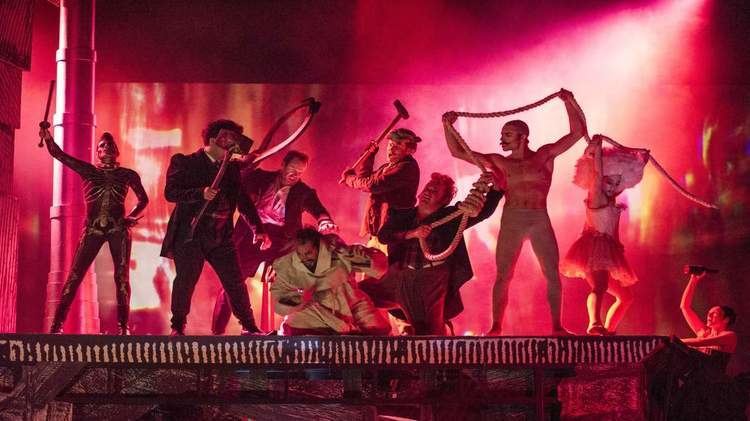 | ||
Similar Béatrice et Bénédict, La damnation de Faust, Les Troyens, Roméo et Juliette, Les francs‑juges | ||
Opera benvenuto cellini von hector berlioz
Benvenuto Cellini is an opera semiseria in two acts with music by Hector Berlioz and libretto by Léon de Wailly and Henri Auguste Barbier. It was the first of Berlioz's operas, premiered at the Académie Royale de Musique (Salle Le Peletier) on 10 September 1838. The story is inspired by the memoirs of the Florentine sculptor Benvenuto Cellini, although the elements of the plot are largely fictional. The opera is technically very challenging and rarely performed. However, the overture to the opera sometimes features in symphony orchestra programs, as does the concert overture Le carnaval romain which Berlioz composed from material in the opera.
Contents
- Opera benvenuto cellini von hector berlioz
- Berlioz benvenuto cellini gergiev salzburg 2007
- Composition history
- Editions
- Performance history
- Costumes
- Synopsis
- Act 1
- Act 2
- Recordings
- References
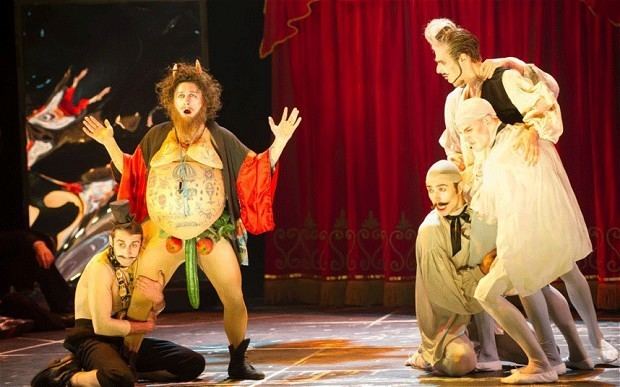
Berlioz benvenuto cellini gergiev salzburg 2007
Composition history
Berlioz wrote in his memoirs that in 1834 (when he was thirty years old)

I had been greatly struck by certain episodes in the life of Benvenuto Cellini. I had the misfortune to believe they would make an interesting and dramatic subject for an opera, and I asked Léon de Wailly and Auguste Barbier...to write a libretto around them
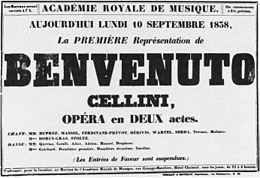
The only plot element drawn directly from Cellini's memoirs concerns the casting of his statue of Perseus (which was in fact not cast in Rome but in Florence for Duke Cosimo I de Medici, where it is stll displayed in the Loggia dei Lanzi). All the personae other than Cellini (with the exception of Pope Clement VII who in the opera is made the commissioner of the statue), and all the other episodes in the opera, are invented.

The original libretto (now lost), which seems to have been in the format of an opéra comique, was rejected by the Paris Opéra-Comique company. The story was then reworked into an opéra semiseria format, without spoken dialogue, and offered to the Paris Opéra, for which it was accepted in 1835 by the new Opéra director, Henri Duponchel. With actual composition starting in 1836, the opera was first performed at the Opéra on September 10, 1838, conducted by François Habeneck, and with Gilbert Duprez in the title role. At its premiere, the audience hissed most of the music after the first few numbers.
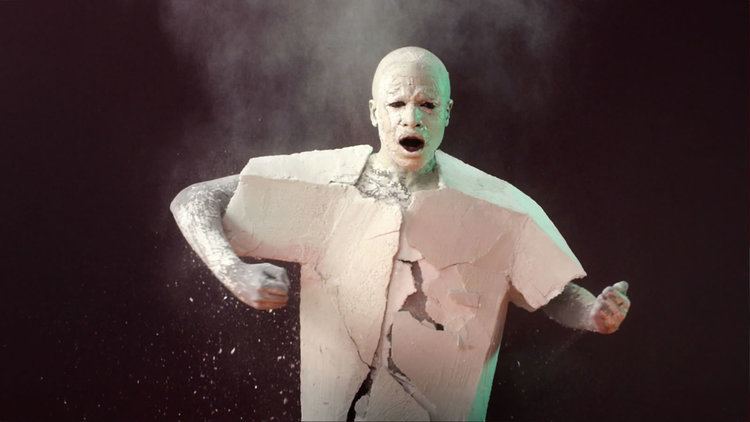
In 1851, Franz Liszt offered to revive the opera in a new production (and version) in Weimar, and suggested changes to the score to Berlioz. This version was performed in Weimar in 1852, where the title role was sung by Karl Beck, the same tenor who had created Wagner's Lohengrin in 1850, also under Liszt, and whose vocal powers were continuing to exhibit the same decline as was apparent two years earlier.
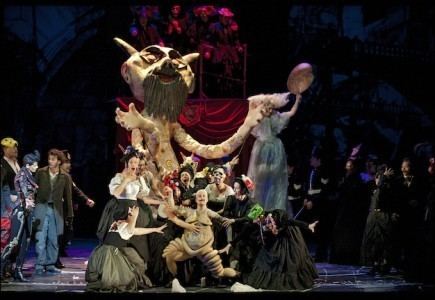
It was performed in London in 1853. However, the London reception was poor. The final performances of the opera in Berlioz's lifetime were in Weimar in 1856, this time without Karl Beck, who had now retired from singing.
Editions
In 1856, the vocal score of the Weimar edition was published in Germany. A French publication of the Weimar version vocal score appeared in 1863 from Choudens. Thomasin La May has examined the Weimar edition of the opera. In 1996, a critical edition of the opera, edited by Hugh Macdonald, was published by Bärenreiter Verlag, as part of the New Berlioz Edition. The critical edition takes into account all of the available editions:
Performance history
The original production at the Paris Opéra had costumes designed by Paul Lormier and sets by René-Humanité Philastre and Charles-Antoine Cambon.
Occasional performances took place after Berlioz's death: in Hanover in 1879, Vienna in 1911, and as part of the inaugural season at the Théâtre des Champs-Élysées for six performances from 31 March 1913 conducted by Felix Weingartner. Following Les Troyens in 1935, the Glasgow Grand Opera Society mounted the opera alongside a production of Béatrice et Bénédict in 1936, conducted by Erik Chisholm.
The Carl Rosa Opera Company, a British touring company, brought it into its repertoire in 1956, giving two performances to packed houses at London's Sadler's Wells Theatre in 1957. The title role was sung by tenor Charles Craig, then at the start of a notable international career. The Royal Opera House in London staged the work on December 15, 1966, followed by its Italian premiere in Naples in 1967.
The first United States production was by the Opera Company of Boston in 1975, under the direction of Sarah Caldwell and with Jon Vickers in the title role. The first performance of the work at the Metropolitan Opera took place on December 4, 2003, with James Levine conducting, Andrei Șerban stage directing, and Marcello Giordani singing the title role.
In 2007 Benvenuto Cellini was staged at Salzburg Festival conducted by Valery Gergiev. A new production directed by Terry Gilliam, with the libretto in an English translation by Charles Hart, was premiered by the English National Opera on 5 June 2014.
Costumes
The costumes for the original production in 1838 were designed by Paul Lormier (1813–1895).
Synopsis
Time: 1532Place: Rome, during Carnival, over Shrove Monday, Mardi Gras, and Ash Wednesday.Act 1
Tableau 1 (Balducci's residence)
Balducci has been summoned to a meeting with Pope Clement VII concerning the Pope's commission of a bronze statue of Perseus from the sculptor Benvenuto Cellini. Balducci would have preferred Fieramosca as the chosen sculptor, and also because he hopes to marry his daughter Teresa to Fieramosca. But Teresa is smitten with Cellini. Before Balducci goes to his meeting with the Pope, Cellini and other Carnival celebrators come on the scene, and pelt Balducci with fausses dragées (flour pellets) that make Balducci look "like a leopard". He can't clean himself off, however, so he continues to his meeting.
A bouquet of flowers comes through the window and lands at Teresa's feet. Attached is a note from Cellini saying that he is coming up. He does so, and explains his plan to take her away from her father so that they can live together. He and his assistant Ascanio will be disguised as monks, and will take her from her father during the Mardi Gras celebrations, when the Castel Sant'Angelo cannon is sounded to mark the end of Carnival. Unbeknownst to them both, Fieramosca has also entered the room, and tries to eavesdrop on them. He does not hear all the information on the first rendition, but he does on the second.
Upon hearing Balducci approach, Fieramosca hides in Teresa's bedroom, and Cellini hides behind the main room door. To distract her father, Teresa invents a story about a noise in her bedroom. Balducci goes into her bedroom, and Cellini escapes in the meantime. To Teresa's surprise, Balducci produces Fieramosca from the bedroom. He and Teresa call on the servants and neighbors to take Fieramosca and dump him outside in the fountain, but Fieramosca breaks free of the crowd.
Tableau 2 (Piazza Colonna)
Cellini, his apprentices and friends sing the praises of being goldsmiths. Bernardino asks for more wine, but the innkeeper demands settlement of their tab. Ascanio then appears with the Pope's advance payment for the Perseus statue, but also with a warning that the casting of the statue must occur the next day. The amount of money in the advance is less than expected, which gives new impetus to the plan to mock Balducci at Cassandro's booth that night.
Fieramosca has also overheard this plan, and confides to his friend Pompeo. Pompeo suggests that they too disguise themselves as monks and abduct Teresa themselves.
People gather in the piazza. A crowd assembles at Cassandro's booth, where "the pantomime-opera of King Midas or The Ass's Ears" is unfurled. Balducci and Teresa enter, soon after Cellini and Ascanio dressed as monks, and then Fieramosca and Pompeo similarly disguised. In the pantomime, Harlequin and Pierrot compete for the attention of King Midas, who is attired to look like Balducci. At this, the real Balducci approaches the stage, leaving Teresa alone. Both sets of "friars" then approach Teresa, to her confusion. The four friars begin to battle by sword, and in the struggle, Cellini fatally stabs Pompeo. The crowd becomes silent, and Cellini is arrested for murder. As he is about to be taken away, the three cannon shots from Castel Sant'Angelo are heard, indicating the end of Carnival and the start of Lent. All of the lights in the piazza are extinguished. During the darkness and resulting confusion, Cellini escapes his captors and Ascanio and Teresa go off. Fieramosca is then mistakenly arrested in Cellini's place.
Act 2
Tableau 1 (Ash Wednesday, Cellini's studio)
Ascanio and Teresa wait for Cellini in his studio. When a procession of friars passes by, they join in the prayer. Cellini then enters, still in monk's disguise, and recounts his escape. Because he is now wanted for murder, he plans to escape Florence with Teresa, but Ascanio reminds him of his obligation to cast the statue. Ascanio goes off to find a horse. Balducci and Fieramosca then appear. Balducci denounces Cellini as a murderer and then promises Teresa to Fieramosca in marriage.
The Pope then appears to check on the progress of the statue. Cellini makes excuses, but the Pope dismisses them and decides that he will give the commission to another sculptor. Cellini then threatens to destroy the mould, and when the Pope's guards approach him, he raises his hammer. The Pope then makes Cellini an offer: if Cellini can cast the statue that evening, he will forgive Cellini's crimes and let him marry Teresa. But if Cellini fails, he will be hanged.
Tableau 2 (Ash Wednesday, evening, Cellini's foundry)
After an aria from Ascanio, Cellini comes on stage and muses on the quiet life of a shepherd. The workmen are at their labours and sing a sea-shanty, which Cellini sees as a bad omen. Ascanio and Cellini encourage the goldsmiths to continue their work. Fieramosca then arrives with two henchmen and challenges Cellini to a duel. Cellini accepts and asks to settle it on the spot, but Fieramosca prefers it to be done away from his workplace. Fieramosca and his men leave.
Teresa arrives and sees Ascanio hand Cellini his rapier, but Cellini assures her that he will be safe. Alone, she hears the workmen start to lay down their tools and stop work, as they have not been paid and lack direction from Cellini. She tries to assure them that they will be paid eventually, but to no avail. Fieramosca then appears, and Teresa faints, thinking that Cellini is dead. This is not so, as Fieramosca is about to offer a bribe to the goldsmiths to cease work completely. This turns the goldsmiths against Fieramosca and they reassert their loyalty to Cellini. Cellini then reappears, and he and the workmen force Fieramosca to don workclothes to help out.
In the evening, the Pope and Balducci arrive to see if the statue is completed. Fieramosca then announces that they are out of metal, which Francesco and Bernardino confirm. Balducci and Fieramosca are pleased at Cellini's impending failure. Cellini then prays, and in a moment of desperation, orders that all art works in his studio, of whatever metal, be put into the crucible and melted, to the consternation of Francesco and Bernardino. After this is done, an explosion blows the lid off the crucible. Then molten metal emerges to fill the mould, and the casting is successful. Balducci and Fieramosca acknowledge Cellini's success. The Pope pardons Cellini, and Cellini and Teresa are united. The opera closes with praise for the goldsmiths.
